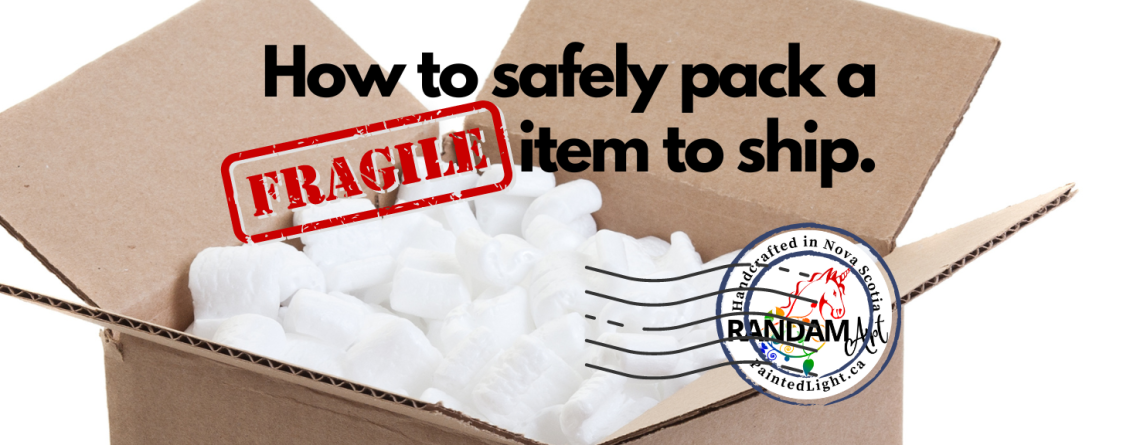How to: Safely pack a fragile item ready to ship.
How to: Safely pack a fragile item ready to ship.
I have been shipping glass items all over the world for many years and so far, only one time did I ever have anything break. The damaged package was literally ran over by a truck so basically, nothing I did in the packing stage made a difference. But aside from any extreme circumstances, I am happy to say my packing method seems to work well. So I thought I would share with you the method I use in case you find it helpful for times when you need to ship something fragile.
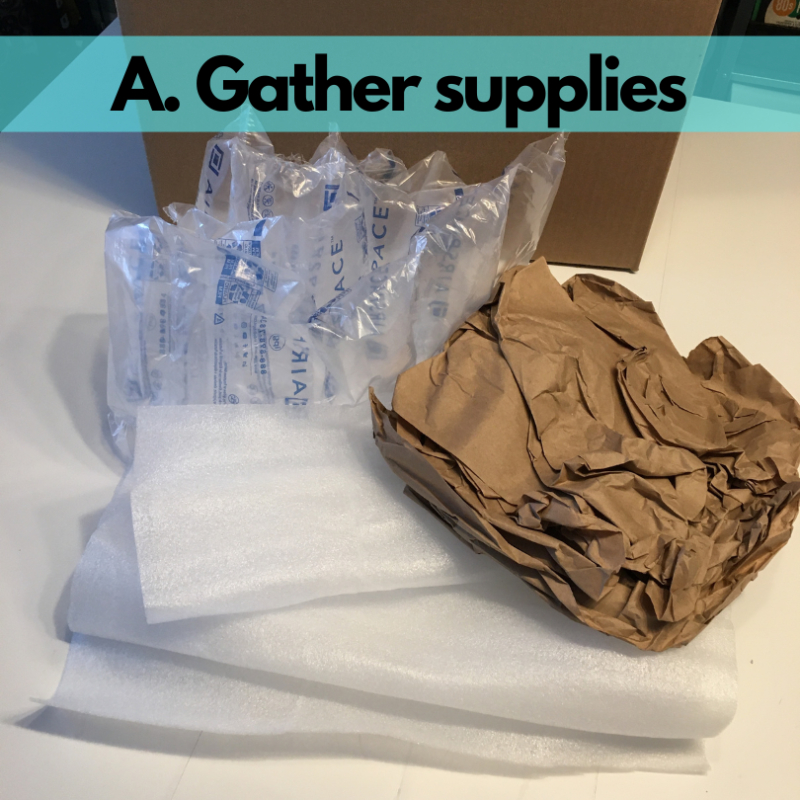
A: Gather Your Supplies
Any packaging sent to me inside incoming packages I receive gets saved for reuse. As long as it is clean and dry, I keep it and use it in my outgoing packages.
Supplies I Always keep on hand:
Tissue Wrap
Bubble Wrap
Packing Paper
Cardboard Boxes
Paper Tape or Packing Tape
In addition to the items listed above, other supplies I don’t purchase but will always save and reuse:
Dish Foam
Packing Peanuts
Air Pillows
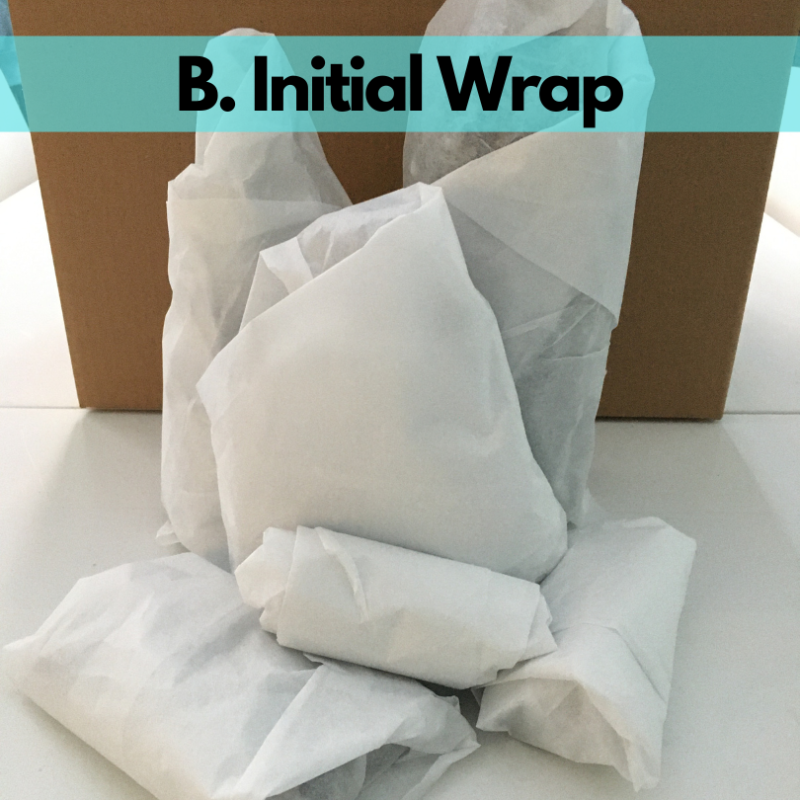
B. Initial Item Wrapping
This step will depend on your item and if you are sending a gift to someone. If it is a gift, you may wish to gift wrap the item(s) at this stage. If you are not gift wrapping then you may elect to do as I do and wrap the item initially in a sheet of tissue wrap just to keep it clean and dust free.
I first wrap all my lamps and other items in tissue wrap before moving on to the padding layer.
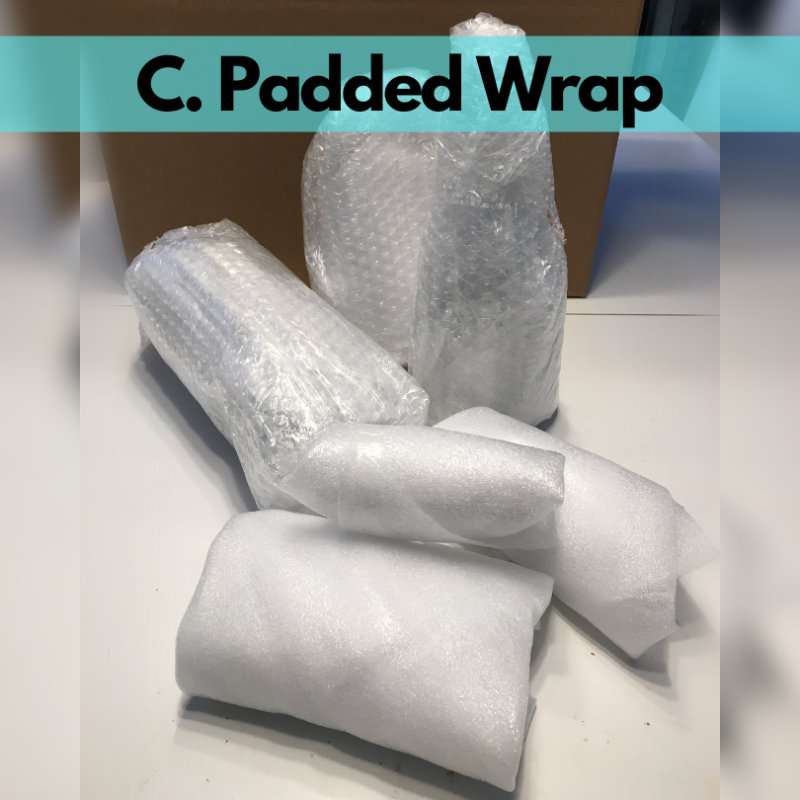
C. Padding Wrap Layer
The next step is the padding layer. With my fragile items I will wrap them in bubble wrap at this stage. Other items that may not themselves be fragile, but need to be padded because they are in the same package with fragile items, will also either wrap in bubble wrap, or the dish foam that sometimes comes in packages I receive. I believe it is often used to pack between plates when moving and can be purchased wherever moving supplies are available. I don’t purchase this product, but I do certainly use it when I get some in my incoming packages.
The goal here is not just to pad the fragile items, but to also make sure that nothing in the box has hard or sharp edges that may cause any issues during shipping.
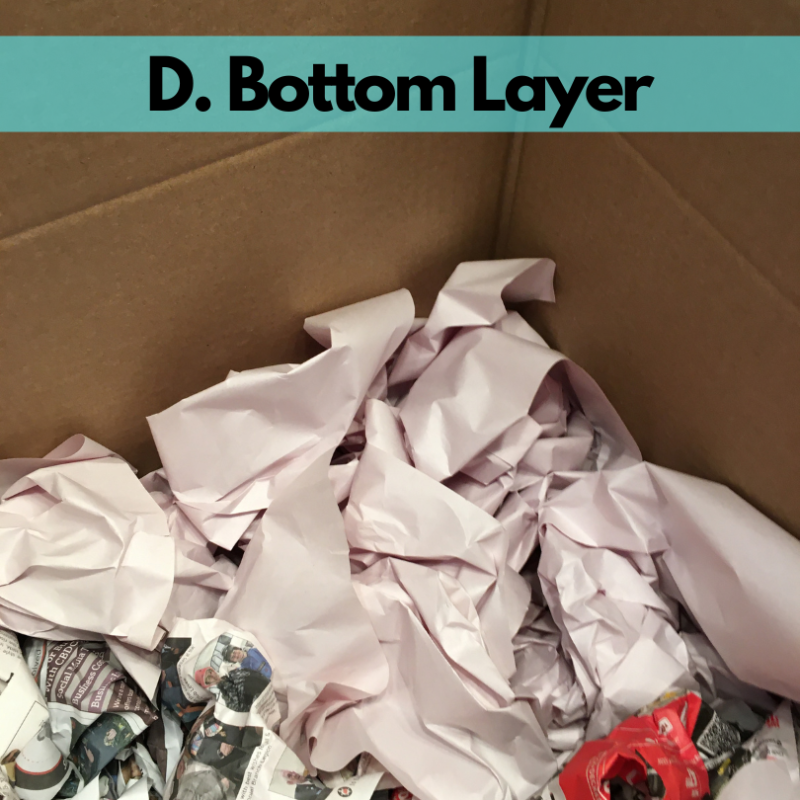
D. Bottom Packing Layer
So once you have everything wrapped and padded ready to place in the box, you will have a good idea what size box you need. For fragile items it is imperative that you have enough room inside the box to keep the items you are shipping away from all the sides of the box and from other items inside the box. Make sure you allow for this when selecting your shipping box size.
The first step to packing the box is to add a layer of packing on the bottom. You can use packing peanuts or paper. Paper is my preference, but I have used peanuts when I have had some to reuse.
The goal here is to make sure your fragile items do not touch the bottom of the box, but have a layer of padding between them and the bottom.
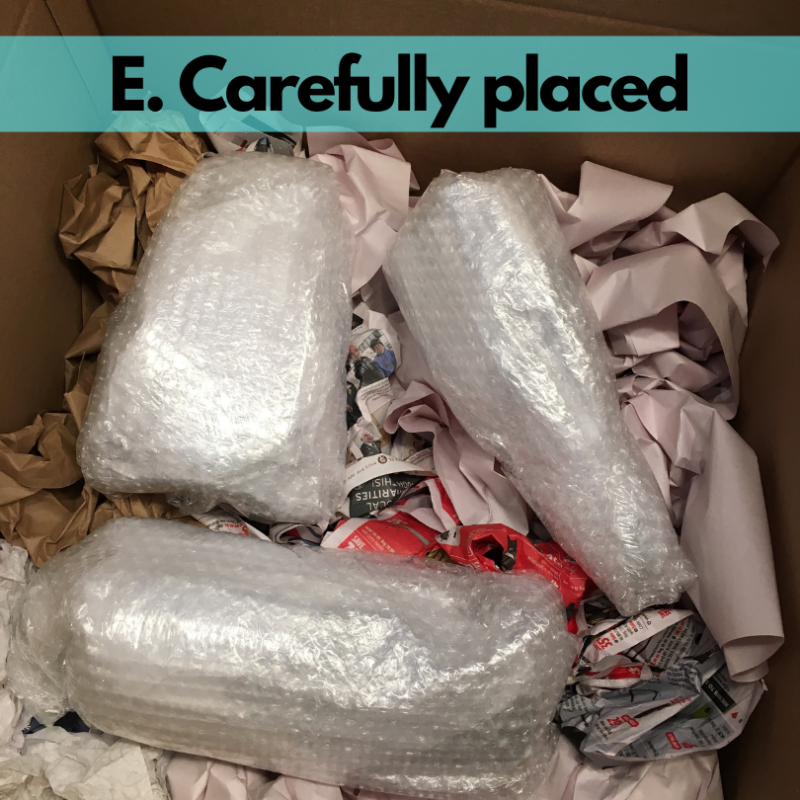
E. Carefully Place the items.
This step is very important. You need to make sure that your fragile items do not touch the sides or each other (if shipping more than one item). Leave enough space around the sides so that even if the box sustains a forceful hit, there is padding between the outside of the box and the items inside.
You also want to ensure that any fragile items are not touching each other or anything else inside the box that could cause damage. You can place layers of packing and another layer of items on top if needed, always making sure there is adequate packing between the items on all sides.
You are creating a cradle of packaging around the fragile items so that they can be bumped and shaken and dropped and will not sustain damage because they are suspended in a cushion of padding inside the box, away from all sides and any other item that could cause damage.
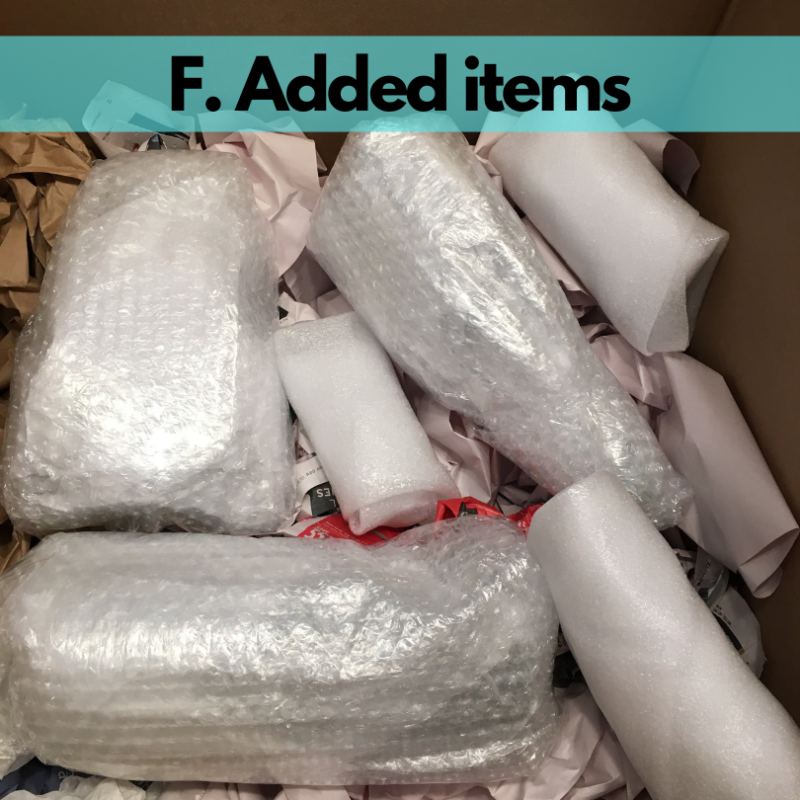
F. Adding more items
At this point if you have other items to add to the box that are not fragile and won’t cause damage to the fragile items, you can use them to fill space between the outside wall or fragile items. As you can see in this image, I have my 3 fragile lamps bubble wrapped and some other items that are not fragile wrapped in dish foam. These items wrapped in dish foam can fill spaces close to the fragile items without causing any harm. But you should still pack all the items with some padding surrounding them all so nothing is touching. (See next step for how to do this).
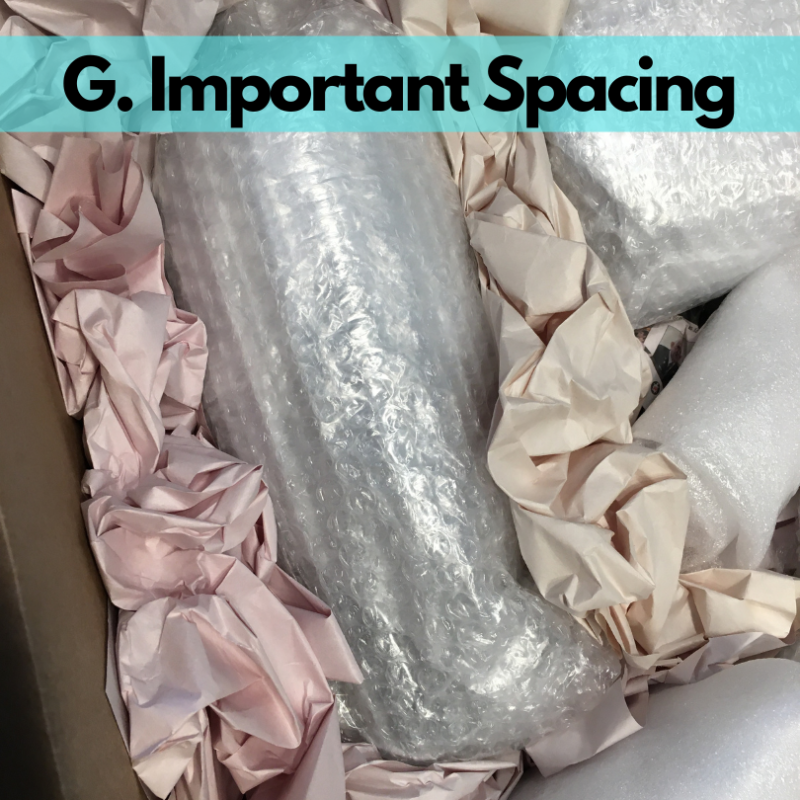
G. Important Spacing
This image (G) shows how the spacing should be around your fragile items, making sure they do not touch the sides of the box or any other item inside the box. This is where I prefer packing paper for this step as I find it easier to achieve this completely surrounded cushioning zone. I have used packing peanuts for this a couple of times but I do find they are not as easy for this situation, they are better suited for a bottom or top layer. I find the paper the best for this step.

H. Avoid the sides.
This image (H) shows how each item in the box is packed with a zone around it, not touching the sides or bottom of the box, or other items inside the box.

I. Top Layer
Now that all the items are secure it is time for the top layer. This is an important step as it will ensure the items you have carefully packed will not move in shipping, retaining the protective zone you have created.
For this layer you can use packing peanuts, air pillows or paper, or a combination. The goal is to make sure when the box is closed that nothing moves around inside.
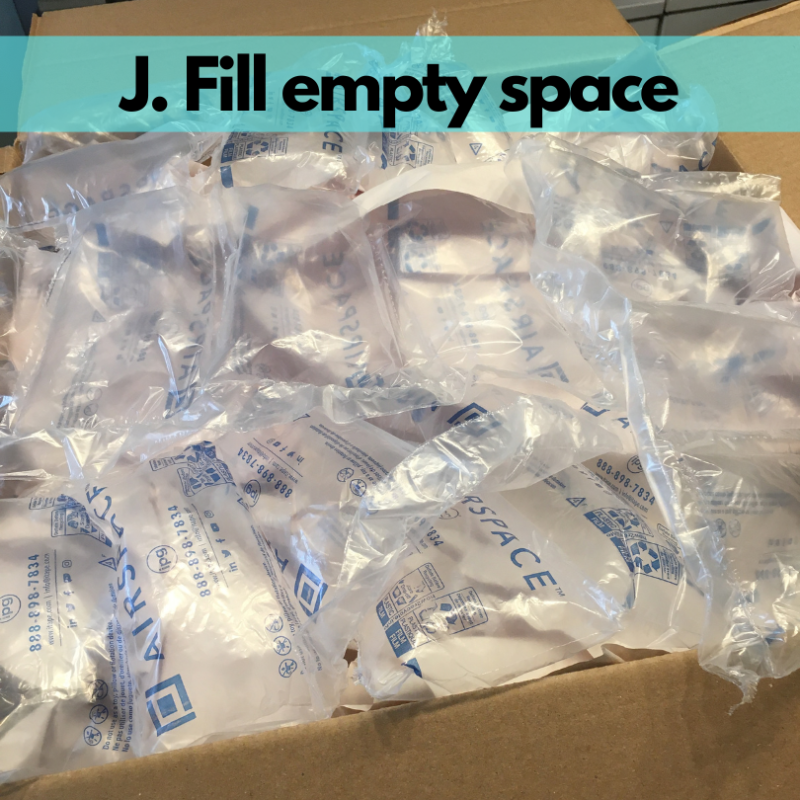
J. Filling Empty Spaces
When I am shipping a single item I generally only use paper for the top layer. When I am shipping more than one item I usually have to fill in more space because a larger box was required, therefore, more space needs to be filled. This is when I will use the air pillows if I have some on hand. This way I am filling more space but adding as little extra weight as possible. The goal in this last step is to make sure nothing moves. At this stage I close the box, pick it and and shake it. If I hear anything moving I need to address that and try again. As long as everything seems secure, the packing is all done!
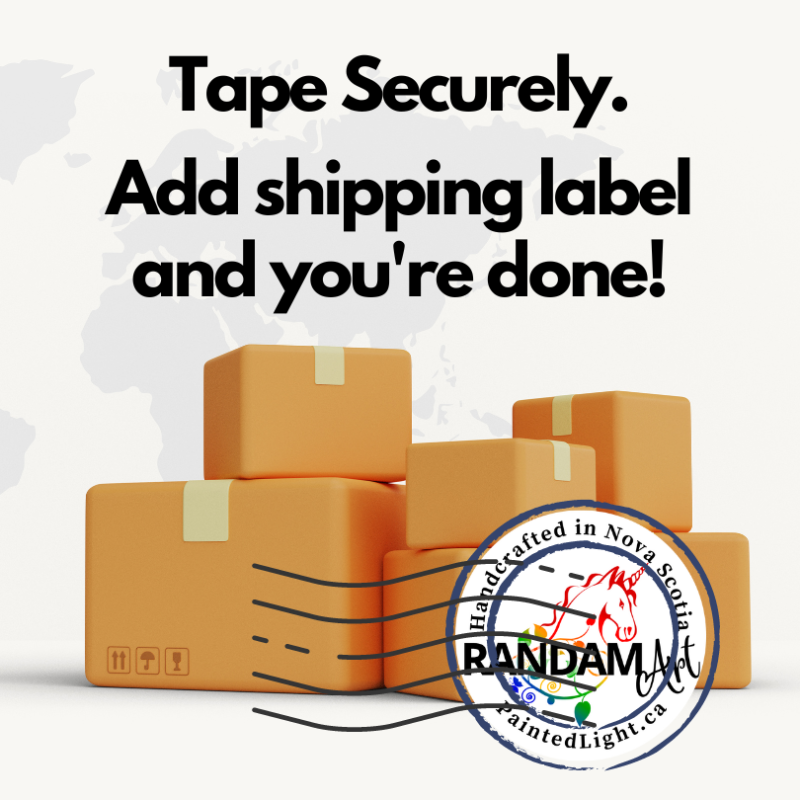
All Done!
Now it is time to tape up your package and affix your shipping label.
One last word about shipping fragile items:
The size of the box factors heavily into the cost of shipping a package. Any non fragile items should be packaged into the smallest box they will fit into to save money, however when it comes to fragile items, you really need the extra space to ensure the packaging is done properly to avoid breakage – you need room to create the padded zone inside the box.

